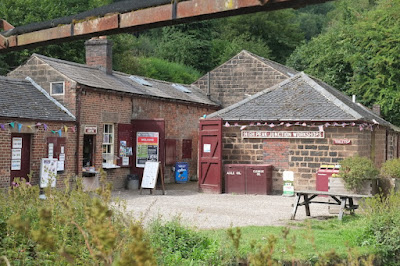Modest monument
A highlight of our recent visit to Cromford was a stroll along the Cromford Canal, taking in canalside views of nature and architecture, listening to (but failing to identify) birdsong, passing the pump house in my previous post, and ending up at High Peak Junction, about a mile from the wharf at Cromford where we started. High Peak Junction provided tea in the shadow of a modest but fascinating building, one of the earliest railway workshops in the world. It’s not much to look at from outside – a small cluster of stone sheds with pitched roofs, festooned with signage that ranges from notices with historical and visitor information to some authentic-looking painted wooden railway signs.
Inside, things get more interesting, with the original inspection pit, engineers’ tools in abundance, a still-working forge, and side rooms for the engineers and railway clerks. Online descriptions of an untouched ‘time capsule’, coupled with period photographs, are a little misleading – there’s a health and safety fence around the inspection pit and a number of large information banners hang from the iron and timber roof trusses. But the place is still packed with interest and objects to linger over, from the files, hammers and anvils of the blacksmith, to metalworkers’ drills, oil tanks, and the London Midland Scottish railwayana in the side rooms. There’s much here to delight the railway specialist and to intrigue the visitor with a more casual interest.
This workshop dates back to 1825–30, which is very early indeed in the history of railways. So early indeed that the first railway items to be looked after here were wagons and rails – there were no locomotives here then, and trains were pulled by horses. Later, when steam engines arrived here in 1833, the entrance to the workshop had to be modified to accommodate their tall funnels. The ’shop was still in use in 1967, when the line closed, and it’s said* that many of the tools that still remain were made in the forge in this very building. So in this sense, the term ‘time capsule’ is spot on.
- - - - -
* I’ve drawn in this post on the account of the workshops here. Workshop interior: original inspection pit (and forge with tools in the background); modern heath and safety fence.





No comments:
Post a Comment